The role of forests and trees in mitigating climate change and capturing and storing carbon in biomass and soil is well recognized. Over the past few decades, a variety of schemes, including REDD, REDD+, 4per1000 and AFR100 have been designed to leverage this mitigation potential.
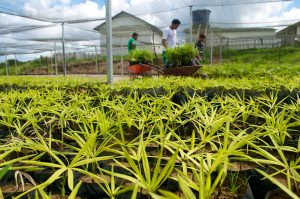
However, much less attention has been given to the role of forests and trees in helping farmers and farm systems adapt to climate change. Today, with climate change impacts already having immediate, dramatic impacts on smallholder farmers, it is time to have a more balanced approach.
That’s why we are calling for a shift of focus from trees and mitigation to trees and adaptation. There is a need to explore what forests, trees and agroforestry can bring to the adaptation of other sectors, particularly agriculture.
This coincides with a need to change perspectives, from a dominant global perspective centered on carbon, to a local perspective centered on what works for farmers in a particular place. There is growing understanding that tree planting initiatives for mitigation won’t happen unless they benefit farmers locally. Farmers, however, will plant trees if they see how they help their livelihood systems become more resilient to climate change.
At the recent 4th World Congress on Agroforestry, our colleagues from the CGIAR Research Program on Forests, Trees and Agroforestry (FTA) gave a series of presentations that illustrates this farmer-centered, place-based approach. They showed how agroforestry can allow farmers to adapt to climate change, improve their livelihoods and contribute to resilient systems, while also working toward mitigation objectives.
Read also: Agroforestry: Development underdog headed for center stage in global sustainability efforts
Trees for adaptation
During the congress, Roeland Kindt (ICRAF) and collaborators presented their work on a climate change atlas being prepared for Africa, with habitat change projected for 150 tree species native to Africa. This work follows a publication by World Agroforestry (ICRAF), in collaboration with Bioversity International, CATIE and Hivos, on habitat suitability maps for 54 tree species that are widely used in Central America for shade in coffee or cocoa agroforestry systems.
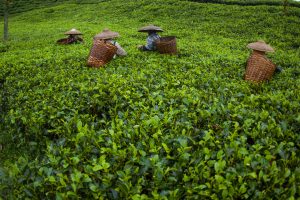
To adapt to climate change, preserving the diversity of genetic resources is crucial. Alice Muchugi (ICRAF) and collaborators explored the challenges relating to the conservation of high-value tree genetic resources and proposed options to facilitate their conservation and use.
In order to better achieve restoration targets through agroforestry, Lalisa Duguma (ICRAF) and collaborators proposed to change the discourse from “tree planting” to “tree growing”. They highlighted the discrepancy between the short time span of most restoration projects and the time needed to ensure a good survival rate of planted trees, especially when accounting for future shifts in climate.
Soil organic carbon
The increase of soil organic carbon, an indicator of carbon sequestered, should also be seen as an adaptation measure. It is key to soil fertility and to water retention and storage in the soil. It can therefore help boost and stabilize the productivity of agroforestry systems, even in the face of climate change impacts.
A study by Sari Pitkänen and collaborators conducted in Southeast Sulawesi, Indonesia, showed that carbon stocks in agroforestry systems correlate with tree diversity.
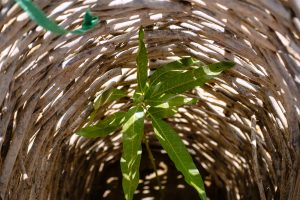
However, despite knowing the importance of soil organic carbon, measuring it has long been slow, expensive and difficult to standardize. In response to this, Keith Shepherd and collaborators from ICRAF have tested infrared spectroscopy technology that can provide a robust, low-cost, integrated indicator of soil organic carbon levels. They have demonstrated that inexpensive handheld infrared instruments can be used for measuring soil health changes.
Being able to easily measure soil organic carbon levels allows for evaluating the impacts of restoration initiatives. In another study, Ermias Aynekulu (ICRAF) and collaborators examined the effects of two decades of annual prescribed burning of grazing lands in Burkina Faso and three decades of livestock exclosures in Ethiopia.
Shepherd suggested prioritizing efforts to promote good land management practices at scale to prevent carbon losses, rather than trying to restore already degraded land. This would mean looking at policy interventions to prevent degradation and maintain or enhance soil fertility – for example by promoting agroforestry practices.
Read also: A five-part road map for how to succeed with agroforestry
Local knowledge and land restoration
Land restoration can play a considerable role in addressing climate change, both adaptation and mitigation, and for this agroforestry is key. Several presentations at the congress explored some of the dimensions that determine the likelihood of success for restoration projects. Key among these factors were accounting for and leveraging local knowledge.
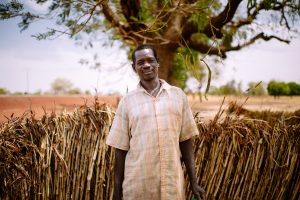
Mary Crossland (Bangor University) and collaborators, in a study in northwest Ethiopia, noted that national objectives and local perceptions and priorities are often different. Local actors are often reluctant to accept the exclosure of areas that are not yet highly degraded, even though it has been shown to be a more effective strategy than focusing on very degraded land. Farmers with a large amount of livestock or little land were strongly opposed to exclosures. This example shows the need to understand how livelihoods interact with different restoration interventions and to take measures that compensate for their impacts on the most vulnerable people.
Anne Kuria (ICRAF) and collaborators explored the role local knowledge can play in adapting land restoration options to local contexts and farmers’ circumstances in Ethiopian drylands. Farmers identified 12 contextual factors that influence the suitability of restoration options for local contexts. Biophysical factors were soil erosion type, soil type, soil depth, slope of the field, field location along a slope and field size. Socioeconomic factors were livestock management systems, land tenure systems, labor, gender, technology and skills. This study also demonstrated that farmers utilized their local knowledge to adapt and modify land restoration interventions to suit their needs and context.
Making agroforestry count
Understanding the potential of agroforestry as a climate change adaptation strategy is one thing, but how can it become a key element of countries’ climate policies?
Here, key mechanisms are the national adaptation plans (NAPs) that countries are preparing under the United Nations Framework Convention on Climate Change (UNFCCC) as an opportunity. Ninety-one countries are currently in the process of developing their national adaptation plans.
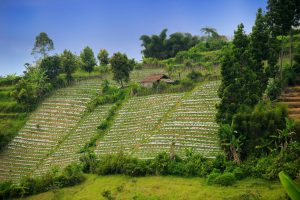
In a review that we conducted of the 15 national adaptation plans published so far, the word ‘agroforestry’ is present in two-thirds of the plans, but agroforestry practices are referenced more frequently, as a means of adaptation and as serving a great variety of purposes related to natural resource management. These include restoring degraded land, reducing soil erosion, restoring water catchments, protecting water tanks and rivers, protecting against wind and storms and providing shade.
These recommendations generally focus on single biophysical benefits and often neglect integration of the trees with other crops as well as agroforestry’s potential socioeconomic benefits. The NAPs are generally silent on measures related to the enabling environment needed for planting trees, such as measures for tenure as well as seed and seedling systems.
Because the UNFCCC clearly says that the NAPs have to be guided by the “best available science”, we now have a huge responsibility to bring scientific information to the attention of decision-makers.
By Vincent Gitz, Director, FTA and Alexandre Meybeck, Senior Technical Advisor, FTA.
The CGIAR Research Program on Forests, Trees and Agroforestry (FTA) is the world’s largest research for development program to enhance the role of forests, trees and agroforestry in sustainable development and food security and to address climate change. CIFOR leads FTA in partnership with Bioversity International, CATIE, CIRAD, ICRAF, INBAR and TBI. FTA’s work is supported by the CGIAR Trust Fund.











